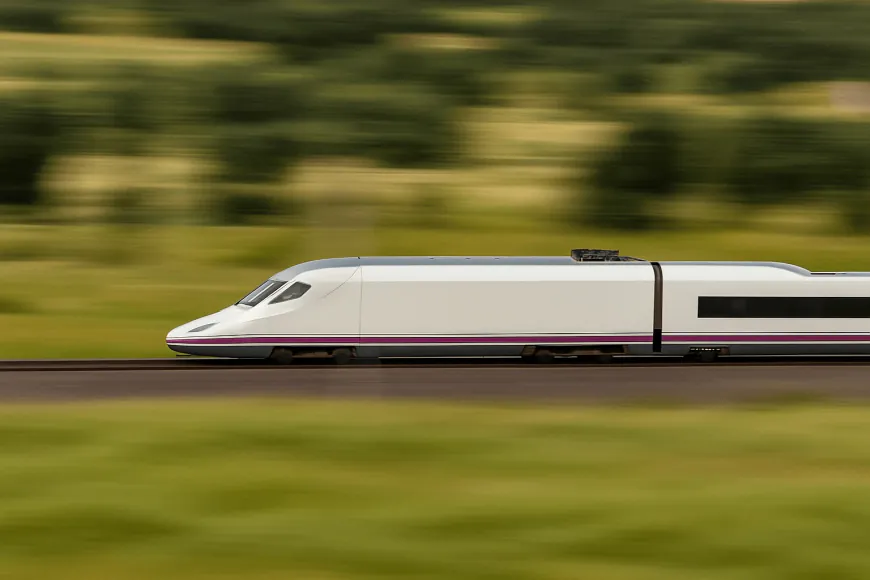Madrid to Lisbon in 3 Hours: Ambitious Iberian High-Speed Rail Link Faces Challenges But Promises Sustainable Future
Spain and Portugal advance plans for a revolutionary high-speed rail connection that could slash Madrid-Lisbon journey times from 10+ to just 3 hours, despite realistic timeline concerns. Learn about this strategic European rail project.

Spain and Portugal are advancing plans for a high-speed rail link that would dramatically cut journey times between their capitals from over ten hours to just three hours, as part of a broader European push for sustainable transport networks.
This transformative project represents a major strategic priority for both nations, with significant ecological and economic benefits at stake. The proposed high-speed connection would revitalize a direct link that was lost when the "Trenhotel Lusitania" service ceased operations in 2020.
Strategic Significance in European Rail Development
The Madrid-Lisbon high-speed rail connection forms part of a comprehensive European effort to enhance cross-border rail networks, receiving strong support from the European Commission. The project aligns with Europe's broader sustainability goals by:
- Accelerating decarbonization of transport between major population centers
- Reducing short-haul flights between the Iberian capitals
- Strengthening economic ties between Spain and Portugal
- Providing symbolic connectivity ahead of the jointly-hosted World Cup
"This connection represents more than just transportation infrastructure—it's a commitment to sustainable mobility that will benefit generations of Europeans," noted a project spokesperson. "By replacing carbon-intensive travel options with efficient rail services, we're addressing climate concerns while enhancing regional connectivity."
Immediate Progress and Long-Term Iberian Network Vision
Current Developments Taking Shape
Tangible progress is already underway with a crucial 100-kilometer section between Elvas and Évora scheduled to open this year. This initial segment will significantly reduce travel time on the Lisbon-Badajoz route, demonstrating concrete advancement toward the broader vision.
Future Iberian High-Speed Network
The Madrid-Lisbon connection represents just one component of an ambitious Iberian high-speed network that aims to revolutionize travel across the peninsula. Additional planned developments include:
- Lisbon-Porto connection with journey times of just 1 hour 15 minutes
- Extensions into northwestern Spain
- Potential routes toward Porto via Salamanca
This comprehensive network would transform mobility across the region, creating seamless connections between major population centers while dramatically reducing travel times.
Timeline Projections: Balancing Ambition with Reality
The project's timeline includes several key milestones with varying degrees of feasibility:
- 2027 Target: Six-hour journey between Madrid and Lisbon
- 2030 Vision: Three-hour journey completion goal
However, analysis suggests significant challenges to meeting these ambitious deadlines. The three-hour journey target by 2030 is widely considered "very short and little realistic" by industry experts. This assessment reflects the substantial infrastructure requirements still needed, particularly on the Spanish side of the border.
Critical Challenges Facing Implementation
Several major obstacles stand in the way of realizing the full vision within the proposed timeframe:
Infrastructure Completion Hurdles
The most significant challenge involves completing the Madrid-Badajoz high-speed line on the Spanish side. Current assessments indicate this crucial segment is unlikely to meet the 2030 target date, which directly impacts the overall project timeline.
Many analysts express doubt that the complete high-speed line will be finished in time for the World Cup, necessitating potential interim solutions or revised expectations.
Technical Adaptation Requirements
Spanish rail operator Renfe faces substantial technical challenges, requiring approximately €15 million in investments to adapt its trains to Portuguese technical standards. These adaptations include:
- Electrical system compatibility modifications
- Signaling system harmonization
- Operational protocol adjustments
These technical requirements add complexity and cost to an already ambitious project.
Market and Operational Considerations
Beyond the physical infrastructure, successful implementation requires addressing:
- Cross-border operational coordination
- Competitive pricing strategies to attract passengers from air travel
- Integration with existing rail networks and schedules
- Maintenance and service standards harmonization
Complementary Infrastructure: New Lisbon Airport Development
In parallel with the rail project, Portugal is developing a new international airport at Alcochete, located approximately 40 kilometers from Lisbon. This significant infrastructure project:
- Aims to replace the currently saturated Humberto Delgado airport
- Has a targeted completion date of 2034
- Includes a new road link spanning the Tagus river
- Will complement the high-speed rail network to strengthen Portugal's overall transportation accessibility
The coordinated development of these major infrastructure projects reflects Portugal's comprehensive approach to enhancing both domestic and international connectivity.
Industry Perspectives and Government Commitment
Despite the acknowledged challenges, the project maintains strong support from key stakeholders:
- Government officials from both countries emphasize their commitment to the vision
- European Commission representatives highlight the project's alignment with broader continental goals
- Transportation experts acknowledge the project's transformative potential, while urging realistic timeline assessments
"We recognize the ambitious nature of this timeline," stated a government representative. "However, the strategic importance of this connection justifies pursuing this vision with determination, even as we acknowledge the need for flexibility in implementation scheduling."
Environmental and Economic Impact Potential
The completion of the Madrid-Lisbon high-speed connection would deliver substantial sustainability benefits:
- Potential reduction of approximately 10,000 flights annually between the capitals
- Estimated carbon emissions savings of over 100,000 tons per year
- Creation of thousands of jobs during construction and operation phases
- Enhancement of tourism and business travel between the nations
These environmental and economic benefits provide powerful motivation for overcoming the project's implementation challenges.
Conclusion: Transformative Vision Requiring Persistence
The Madrid-Lisbon high-speed rail link represents a transformative vision for Iberian connectivity with far-reaching implications for sustainable European travel. While significant challenges remain—particularly regarding infrastructure completion timelines—the strategic importance of this connection ensures continued momentum.
As both nations work to overcome technical and logistical hurdles, the project stands as a testament to the growing recognition that high-speed rail represents a critical component of Europe's sustainable transportation future. When eventually completed, this connection will mark a significant milestone in the continent's journey toward an integrated, low-carbon mobility network.


 TrainsNews
TrainsNews 





